TECHNOLOGY
INSIDE THE HIVE MIND OF DSO'S DRONES
12 Jul 2022
The algorithms developed by this DSO team allow a swarm of drones to make its own decisions in a mission. Find out more in the second of our "DSO 50 Tech" series, which dives into the cutting-edge technology that DSO provides the SAF, and marks DSO's 50th anniversary this year.
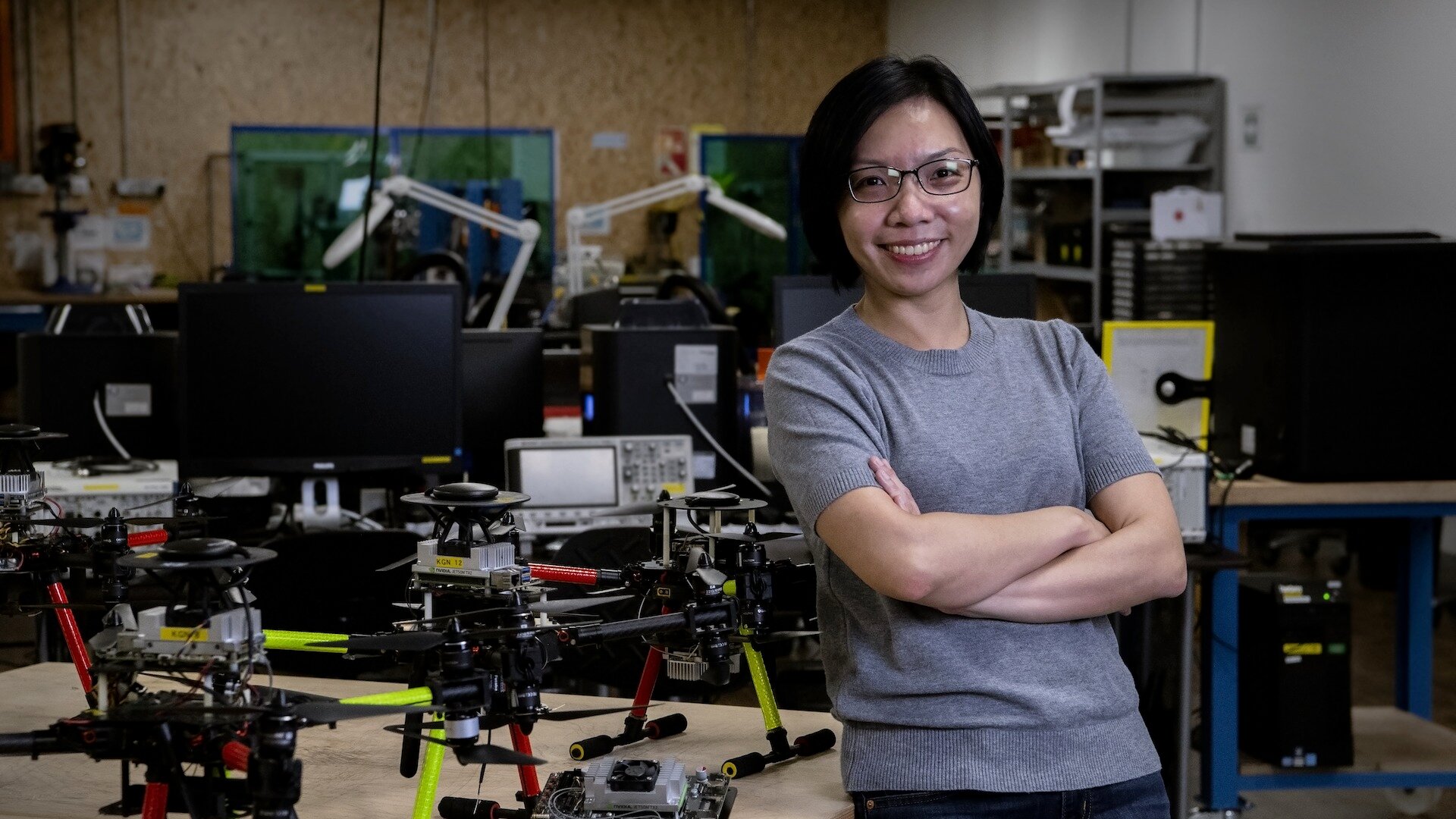

The swarm efficiently assigned the most suitable drones to the surveillance area, while the rest self-organised in the holding area.
Although they may look alike, the autonomous drones at DSO National Laboratories (DSO) work differently – they have swarm intelligence.
Unlike conventional drones which are usually pre-programmed to fly to create certain shapes and forms, DSO's drones aren't given specific directions on where to go.
Instead, the operator simply gives the swarm a task, and the swarm autonomously decides which drones should carry out the task, and how.
This ability to self-organise is made possible with DSO's swarm intelligence algorithms that are loaded onto each drone. Ms Jennifer Kwan, Principal System Engineer (Swarm Autonomy), explains: "In many ways, swarm intelligence works like how humans would work as a team if they were given a task, but without a leader.
"If a group of humans were told to spread out in a bus, they can do so without needing the conductor to tell each person exactly where to go. And even if one person leaves, the group would still be able to carry on this task."
This is similar to swarm intelligence, where the operator only needs to give high-level commands without controlling individual drones, she said.
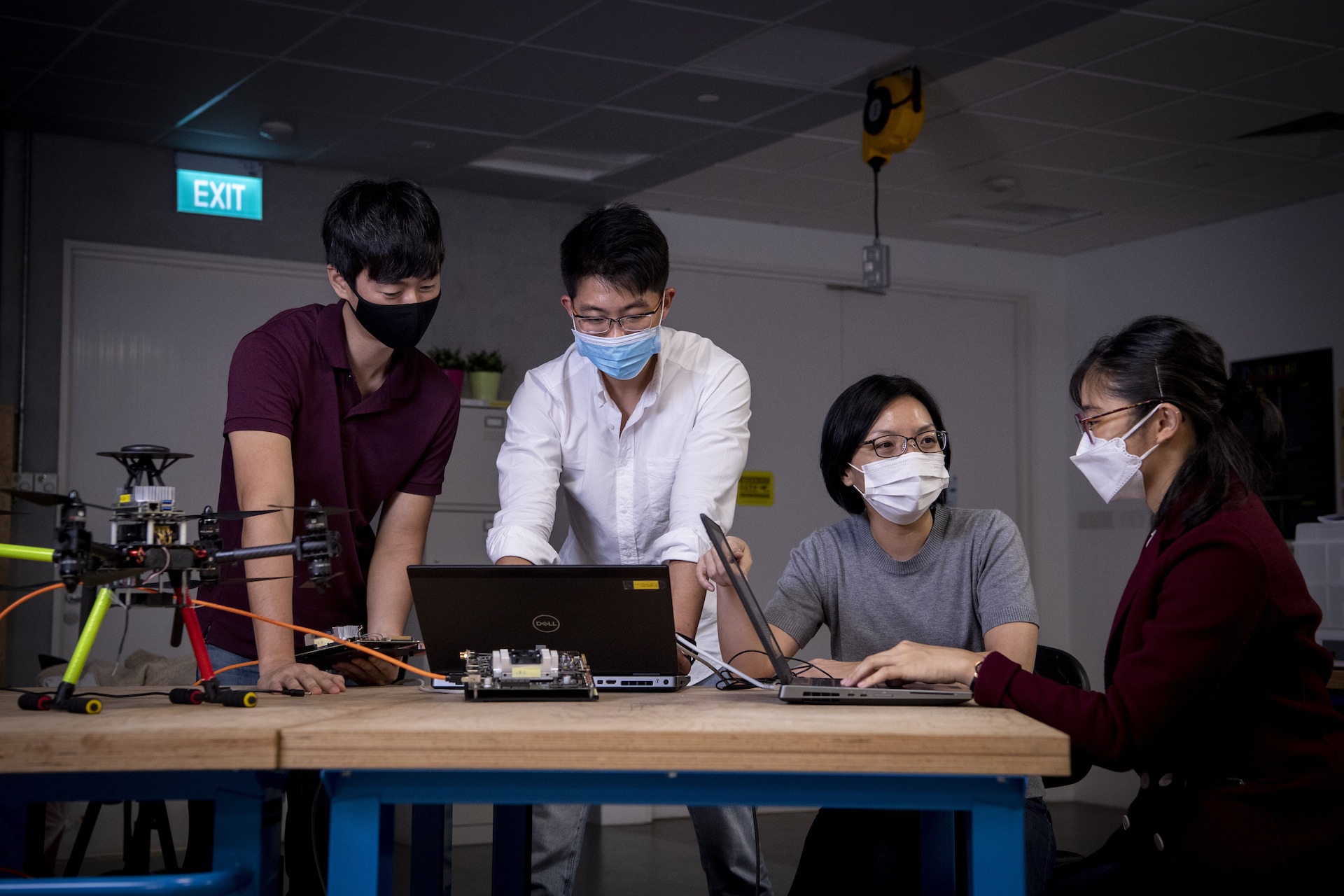
First flight trial
For Ms Kwan, who was part of the team that embarked on this research about 10 years ago, this project has come a long way.
"When we first began developing our algorithms in those early days, the drone technologies and systems weren’t mature enough to support swarm intelligence," said Ms Kwan.
Along the way, the team also developed a digital twinning capability which allows them to play out the swarm’s actions in a digital simulation before conducting a flight trial.
The team had its first field test in late 2019, where the swarm successfully met various mission objectives – from spreading out in a designated holding area, to carrying out surveillance.
The swarm efficiently assigned the most suitable drones to the surveillance area, while the rest self-organised in the holding area.
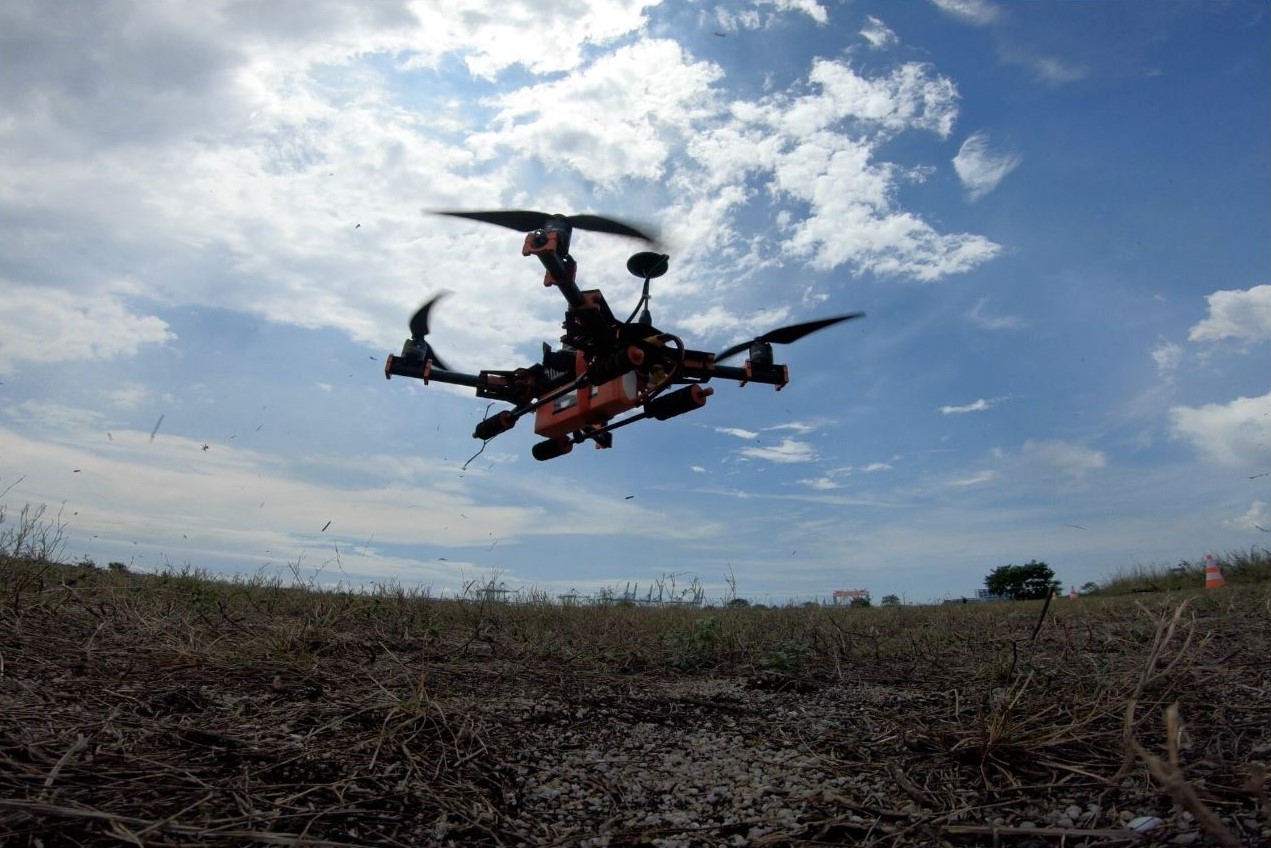

All this reduces the load of operators: from having to configure or control each drone, they can now play a largely supervisory role instead.
When this technology matures, it could have wide applications for defence and security, including surveillance missions.
Just the beginning
Ms Kwan is extremely excited about where the technology is headed.
The System Engineer learnt to write her first "Hello, World!" program when she was in primary school – traditionally, the first code that aspiring programmers learn to write to get the computer to display those two words.
While in DSO, she first started working on centralised robotics systems – systems controlled by a central computer – before moving on to decentralised autonomy, where the systems are able to interact with one another and make decisions on their own.
"Achieving swarm intelligence in the air is just the beginning," said Ms Kwan.
"Swarm intelligence is not just restricted to drones – in the future, our swarm intelligence could also be applied to other domains like land, or sea!"
Watch the team's swarm intelligence in action!
ALSO READ IN TECHNOLOGY

AI joins the fight in national cyber defence exercise
12 Nov 2025
AI and closer collaboration among agencies and industry are taking centre stage in this year’s Critical Infrastructure Defence Exercise (CIDeX).
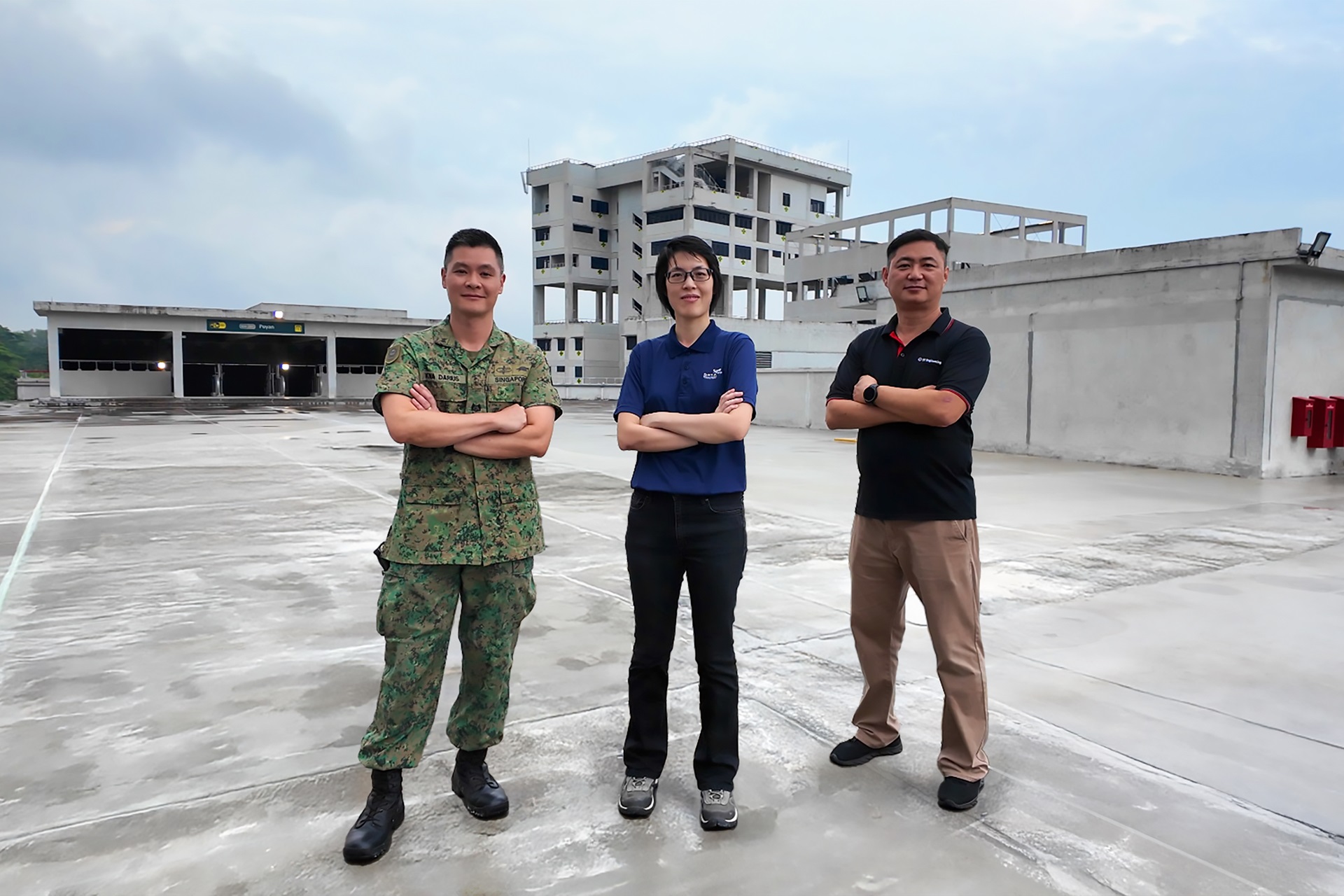
They built this city
01 Oct 2025
Turning vision to reality: the team behind SAFTI City clinches the Defence Technology Prize 2025 Team (Engineering) Award!
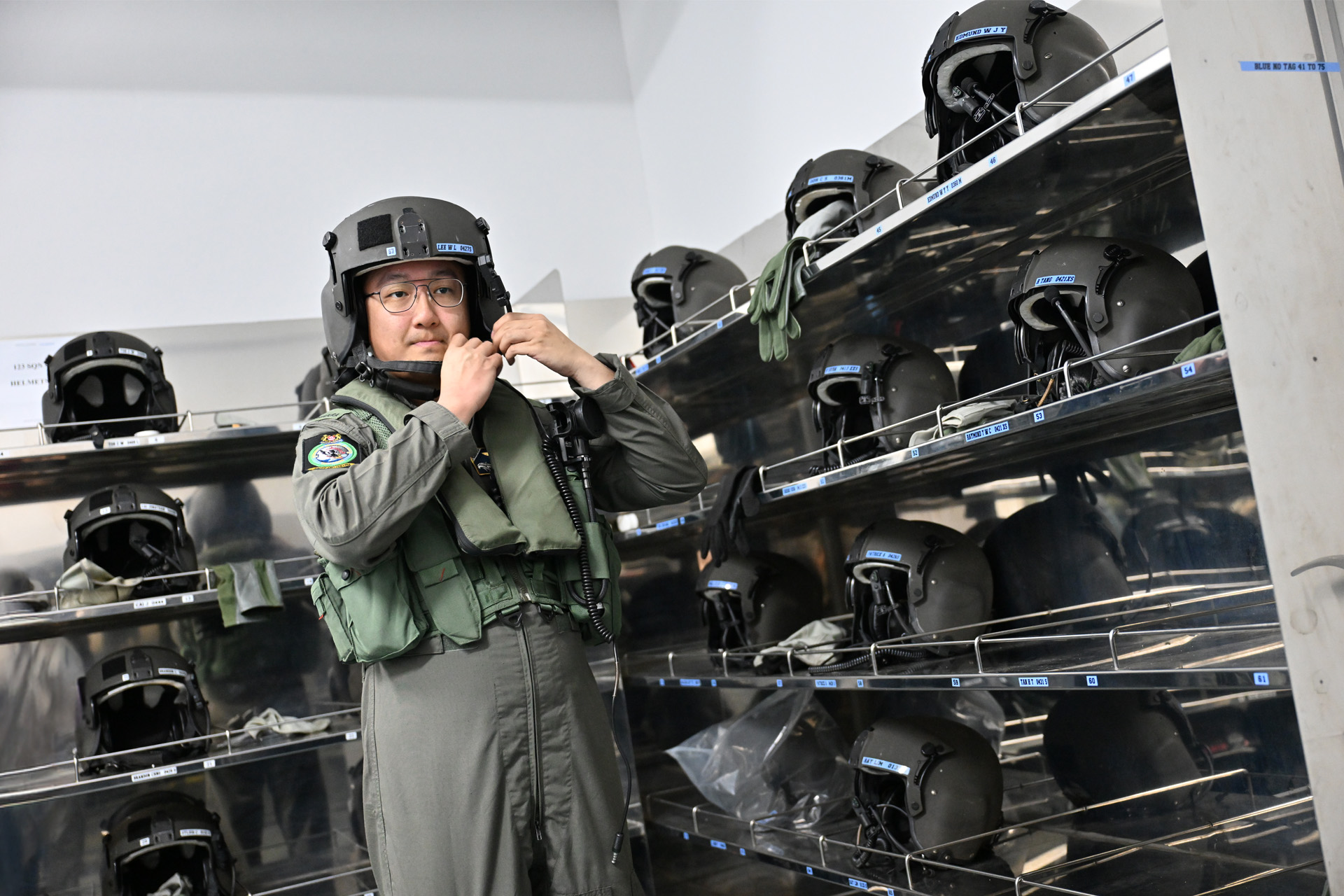
Operating over skies & seas
22 Aug 2025
This gear is designed to help a Sensor Supervisor survive emergencies in the air and at sea.


